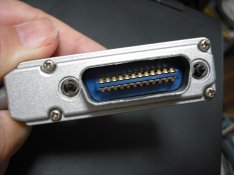Hi Ray,
Complication 2 - Just zero and calibrate ALL (4) channels. At the end of this post are results I get on a Macbeth ColorChecker (the full-size one, not the tiny one). You should be able to "zero" all of you colors, individually, on the "White" patch - check your calibration on the Black patch, at about 1.52.
BTW, the color signals should be so strong, that even a large calibration error won't matter, with respect to finding "who's who."
Complication 1- All densitometers I know of work pretty much the same - they insert some sort of narrow band filter, either red, or green, or blue, into the light path, so that the result effectively tells how much of a dye, cyan, or magenta, or yellow, is present. That is, a densitometer who's turret is labeled CMY could just as well have been labeled RGB. In general photography, we would use a set of responses they call "Status A" for things we visually observe, such as prints or slides. "Status M" would be for color negs, which are intended to be printed, not directly viewed. I know that there are some graphic arts versions, such as Status T and E (?), which used slightly different versions of the red, green, and blue filters.
Here's the data I get reading one example of an actual Macbeth card - I used an X-rite 810 (Status A)
Results are listed, for each Macbeth patch, in order of: R,G, B, then Vis.
White = 0.05, 0.05, 0.06, 0.05
Black = 1.53, 1.52, 1.51, 1.52
Red = 0.23, 1.36, 1.34, 0.79
Green = 1.08, 0.50, 1.23, 0.70
Blue = 1.43, 1.31, 0.54, 1.36
note: this is just one sample, there is probably some fair amount of variation in cards. Nevertheless, there is never any doubt about which turret setting has the lowest density, for Macbeth red, green, and blue.











